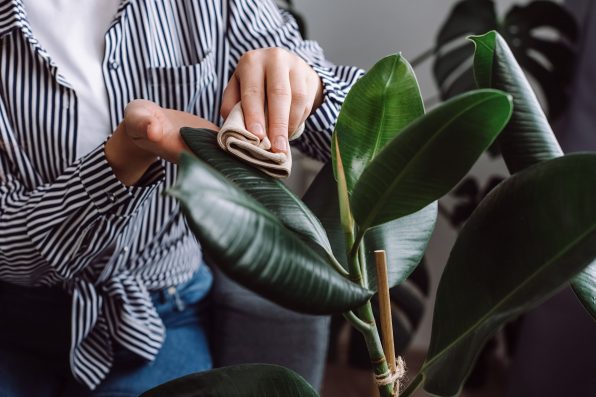Yes, You Actually Have To Dust Your Houseplants: Here’s Why And How Often You Should Do It To Keep Your Greenery Healthy

As you must know, it doesn’t take long for dust to accumulate on all surfaces of your home, including any indoor plants you might own. Unfortunately, houseplants are not immune to collecting dust. In that particular way, they’re just like any other decor or furniture piece in your home.
Although it may seem like a tedious task, keeping your plants free of dust is important to their health. You know that watering them regularly and providing them with enough sunlight is essential for them to thrive. Well, a thorough cleaning is also a crucial part of basic plant care.
A periodic dusting can enhance both your plant and your indoor environment. So, whenever you start your spring cleaning, make sure to give some attention to your plants, too.
Why You Should Dust Your Indoor Plants
Nobody wants a dusty plant. It doesn’t look as lively, and it makes your house look dirtier. But aside from aesthetics, the grime can affect your plant’s ability to nourish itself. A layer of dust on leaves can block sunlight, preventing your plant from photosynthesizing properly.
Over time, the dust can clog the pores on your plant’s leaves, which it uses to breathe. This can lead to a decline in growth and health.
Furthermore, pests can hide in the dust, so you might not notice them until they’ve already taken over and done a fair amount of damage to your plant. As you can see, dust can leave it more susceptible to disease and pest infestations.
How Often To Clean Your Houseplants
Figuring out how frequently you should dust really depends on where you live and how much dust is in the air at your home.

Yura Yarema – stock.adobe.com – illustrative purposes only, not the actual person
Some houses are dustier than others, like those that are located near farms, areas with dirt roads, empty lots, ongoing construction work, or windy places. In that case, you will likely need to clean your houseplants at least every other week or so.
The best way to determine when it’s time for a cleaning is to rub your fingers on the foliage. If you can feel or see any dust, then you should clean the leaves.
How To Clean Your Plants
For most indoor plants, a soft, damp cloth is all you need to wipe off the dust and dislodge any insects. You can also mist your plants with water before going in with the cloth.
When cleaning, use one hand to support the underside of each leaf as you run the dust cloth over it. It will help you avoid accidentally harming your plant.
Some plants require different techniques. For example, if you have fuzzy-leafed plants such as African violets, panda plants, or certain types of begonia, dust particles will become trapped between the fine plant hairs.
A simple cloth won’t be effective in getting them clean. Instead, use a soft paintbrush or a can of compressed air to blow out the dust.
Another way to clean off plants is to take them into your shower or sink. Rinse them off with a gentle spray of lukewarm water. Keep the water pressure low and refrain from exposing your plants to extreme temperatures so the leaves don’t get damaged.
This method is especially helpful for plants with numerous leaves or intricate foliage. It also saves time, allowing you to clean and water your plants simultaneously.
Sign up for Chip Chick’s newsletter and get stories like this delivered to your inbox.
More About:Gardening